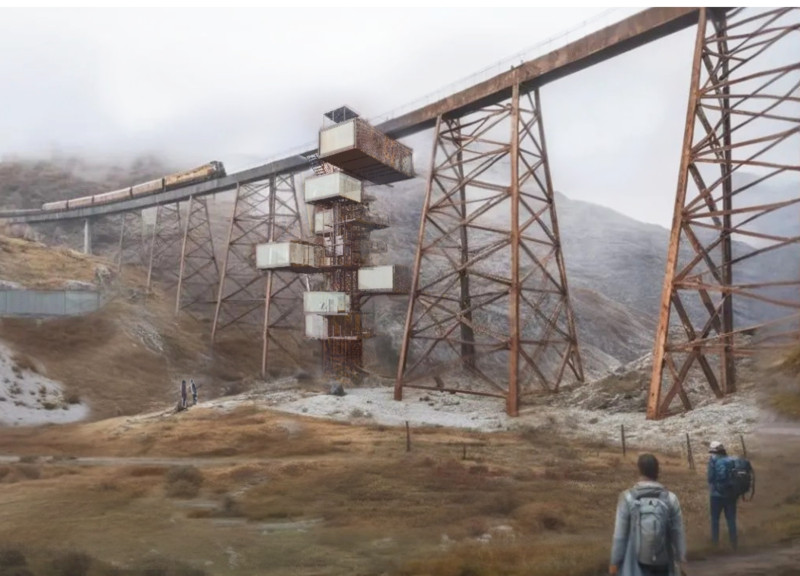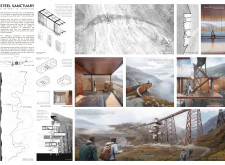5 key facts about this project
## Project Overview
Located along the "Train to the Clouds" route in the Andes, the Steel Sanctuary functions as a retreat for artistic inspiration, offering expansive views that encourage a deep engagement with the dramatic landscape. The design is oriented to enhance the natural beauty of the site while serving both tourists and artists. It aims to create a harmonious relationship between human activity and the surrounding environment.
### Design Strategy and User Experience
The architectural strategy emphasizes integration with the rugged terrain, promoting interaction between the built environment and natural features. Key design elements include elevated viewing platforms that provide panoramic vistas, inviting contemplation and connection to the expansive valley. Dedicated studio spaces for artists are designed with flexibility in mind, allowing for an adaptable environment to support creative processes. Additionally, a multi-use community hub is incorporated to facilitate cultural exchange and programming, reinforcing the site’s role as a center for artistic collaboration.
### Materiality and Sustainability
The selection of materials is crucial in achieving the project’s objectives. Corten steel—recognized for its weathering capabilities—forms the structural and artistic framework, harmonizing with the landscape while ensuring durability. Warm wood finishes within the interiors contrast with the industrial quality of the steel, enhancing the comfort of the spaces. Expansive glass panels facilitate natural light and provide unobstructed access to views, effectively merging indoor and outdoor environments. The concrete foundations ensure stability, particularly in the challenging geological conditions of the Andes. The project also prioritizes sustainability by utilizing locally sourced materials and implementing energy-efficient technologies, aligning with contemporary architectural practices that respect ecological integrity.



















































